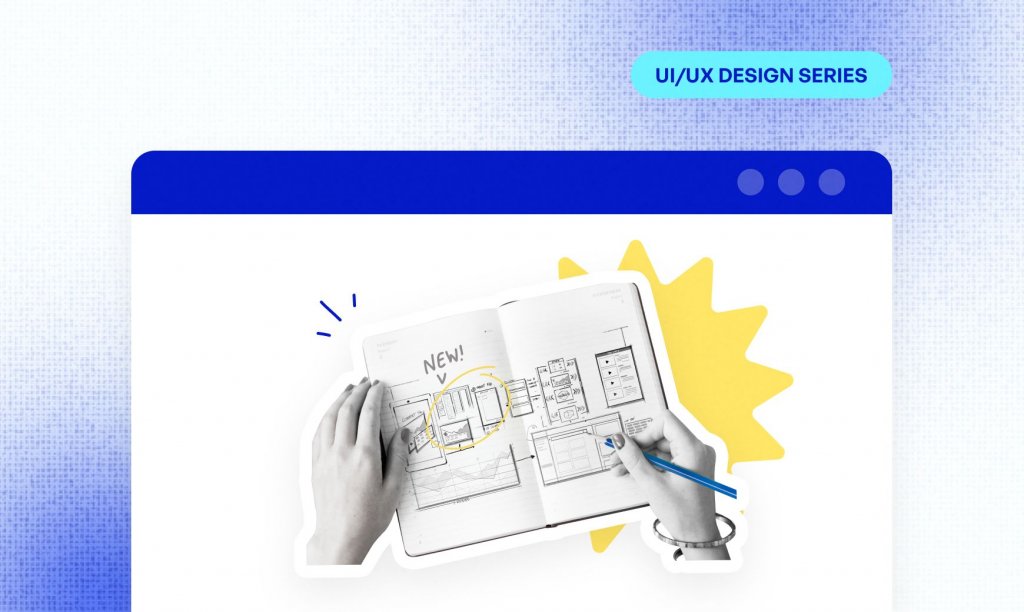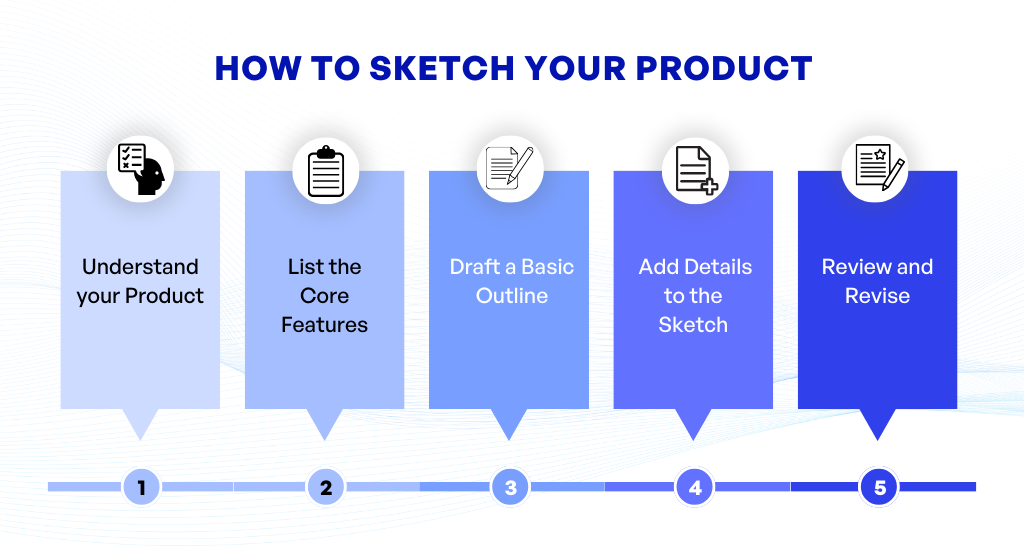
Did you know that 84% of startup entrepreneurs identify the initial conceptualizing phase as the most challenging aspect of their launch journey?
Surprising, isn’t it? But what if there was a simpler technique to translate your innovative ideas into a tangible form? Welcome to the power of sketching!
The power of sketching as a visualization method cannot be underestimated.
- Sketching is quick: All you need is a pen and a paper to jot down your thoughts.
- Sketching is effective: A sketch can articulate your ideas more clearly than words alone.
- Sketching is inclusive: It encourages collaboration by opening a visual communication channel.
Take a moment to reflect. Instead of wrestling with abstract concepts, wouldn’t it be easier to simply draw your thoughts?
1. Introduction to Sketching
Have you ever seen a child busily scribbling away on a piece of paper, lost in their world of creativity? That’s sketching in its purest form – a direct line from the mind to the hand to the page, transforming intangible thoughts and ideas into something tangible. Now, as a startup founder, you might be wondering: “What does sketching have to do with my business?” Well, a whole lot, as it turns out
Sketching is a tool, a method of visual communication that helps in ideation, problem-solving, and visualizing abstract concepts. Be it a rough idea for a new automobile design, the layout of a mobile application, or a complex business model, a simple sketch can be surprisingly powerful.
How so, you might ask? Sketching is not just about creating aesthetically pleasing drawings. It’s a stepping stone in the creative process, allowing you to explore ideas, spot potential problems, and communicate your concepts effectively to others. Talented artists might create sketches that are works of art, but in business and product development, the functionality of a sketch often outweighs its beauty.
Remember, sketching is about communication, not perfection. As a founder, your sketches don’t need to be perfect, but they do need to effectively communicate your ideas. It’s about getting your point across clearly and quickly. With that in mind, let’s explore why sketching is so crucial for startups and how you can put it to work for your brand.
2. Importance of Sketching for Startups

As a startup founder, you might be wondering why sketching deserves a second glance amidst the flurry of other activities demanding your attention. Let’s shed some light on that, shall we?
Clarifying thoughts: Sketching helps to visualize your product, prompting a more concrete understanding of how various pieces fit together. When your imagination takes the tangible shape of a sketch, your vision transforms into a solution that can be tweaked, refined and conceptualized better. It represents the first crucial step in moving your idea from abstract to concrete.
Communicating ideas: A sketch is, in essence, a visual version of your narrative. It’s a compelling way to share your product vision with your team, potential clients, or even investors. It can help you to extract collective feedback, foster collective thinking, and build a community around your product right from the conception stage.
Iterative refinement: While digital tools are useful for final refinements, nothing beats sketching when it comes to easy and fast iterations. With a simple flick of your wrist, you can erase, redraw, or add details, saving you considerable time and money in the early stages of development. Also, it provides an opportunity to probe various design possibilities you can think of, without investing much.
In essence, sketching equips you with the agility that startups need to navigate the early-stage product development labyrinth. It’s an underestimated, yet powerful tool for innovation.
Cost-effectiveness: Besides the obvious savings in time, sketching your idea before diving into development can help to identify potential challenges or shortcomings earlier rather than later — when changes tend to be more expensive and time-consuming to implement.
Truth be told, the power of sketching lies not just within its capacity to visualize ideas, but also in its ability to foster innovation, collaboration, and efficiency. So, is it time for you to start sketching your startup idea?
3. How to Sketch Your Product
A Step-by-Step Guide to Sketching Your Product
Before you dive headfirst into striving to complete your product blueprint, have you considered the necessary steps to follow? Let’s dissect these crucial stages together and weed out potential confusion.

3.1. Step 1: Understand your Product
The first thing that you need is a clear understanding of your product. What problem does it solve? What sets it apart from similar products already in the market? How can it benefit the user? Having a clear picture of your product in your mind is the cornerstone of effectively sketching it out.
3.2. Step 2: List the Core Features
Now that you have an idea of what your product does, it’s time to identify its core features. This is where the “less is more” principle comes into play. It can be tempting to add all the cool features you can think of, but remember, the simpler your product, the easier it is for users to understand and use.
3.3. Step 3: Draft a Basic Outline
Armed with a clear understanding of your product and its core features, you can start sketching. Begin with a basic outline. It doesn’t have to be anything fancy – a simple box may do the trick depending on your product. This gives you a skeleton on which you can start adding details.
3.4. Step 4: Add Details to the Sketch
This is the stage where you flesh out your sketch. Start adding details: buttons, screens, dials, markings, etc., depending on your product. Remember to stay as simple as possible. The aim is to give anyone who sees the sketch a clear understanding of what the product is and how it works.
3.5. Step 5: Review and Revise
Lastly, take a step back and review your sketch. Does it accurately represent your product and its functions? Show it to others, preferably those unfamiliar with your idea, and get their feedback. Do they understand it? If not, it’s back to the drawing board. Don’t be discouraged, revisions are part and parcel of the process.
Sketching your product idea doesn’t have to be a daunting task. By following these steps, not only will you be able to create a clear representation of your product, but it will also enable you to communicate your ideas effectively to others.
4. What effective tools to sketch your idea
Now that you’re well-versed in the art of sketching your product, let’s talk about the tools that can greatly simplify and streamline this process. There are a variety of tools available that offer a broad range of features and capabilities. The choice, of course, depends on your specific needs and personal preferences.
4.1. Pen and Paper
No tool can replace the simplicity and flexibility provided by good old pen and paper. These traditional tools offer you total freedom and control. You’re not restrained by any protocols or conventions. They’re great for rapid prototyping, especially during the ideation stage. However, they lack the collaborative and digital advantages some of the other tools provide.
4.2. Digital Drawing Tablets
Digital drawing tablets, such as those made by Wacom, fuse the traditional sketching approach with modern digital capabilities. They offer high precision and flexibility, coupled with the benefits of digital storage and portability. If you prefer sketching by hand but also want the advantages of digital storage and editing, a drawing tablet might be your best bet.
4.3. Sketching Software
Software tools like Adobe Illustrator, Sketch, Adobe XD, and InVision are incredibly handy for sketching and prototyping. They offer high customization, precision, and scalability. Plus, most of them integrate well with other design and development tools, streamlining your whole process.
- Adobe Illustrator is a comprehensive vector graphics software suited for professional designers.
- Sketch is a powerful design toolkit built specifically for digital designers.
- Adobe XD offers a seamless design to prototype workflow.
- InVision provides a platform for design collaboration and prototyping.
While these tools have a bit of a learning curve, the investment is worth it given the precision, versatility, and detail these tools can provide.
And remember, the best tool for sketching your idea is the one you’re comfortable using and that serves your needs. Whether it’s a simple pen and paper, a stylus on a tablet, or comprehensive design software, the goal is to get your vision out of your head and onto a medium where it can be shared, analyzed, critiqued, and improved.
5. Conclusion
In conclusion, sketching is a highly useful and effective tool for startup founders. The power of sketching lies in its simplicity as a medium that can convey complex ideas with more clarity and precision than just words. Easy to accomplish and hugely accessible, it’s a technique that anyone can try—with a pen and notepad or advanced sketching software.
Throughout this article, you’ve learned the process and steps involved in sketching your product from understanding your product to refining your sketches. The role of sketching is not merely to create a pretty picture, but to visually communicate your idea, highlight the potential issues, and provide possible solutions. Using this method, you can predict your customer’s reactions, anticipate potential problems, and proactively address them – saving time, resources, and effort.
Sketching your product idea is not a one-time activity but something to be iteratively done as you keep refining your product and its features. By continually sketching your ideas and possible modifications, you will be constantly shaping and molding your product to ensure its success on the market.
The variety of tools available, ranging from the humble pen and paper to sophisticated sketching software, empowers entrepreneurs to express their visions effectively. The right tools can transform your thoughts into a tangible form that can be shared, analyzed, and improved upon.
As a startup founder, always remember that great products are born out of great ideas—and sketching is a profound way to visualize and refine those ideas. Embrace this tool and let it be the catalyst for innovation in your startup journey!
If you have any questions about sketching in product development, feel free to contact KVY TECH!


